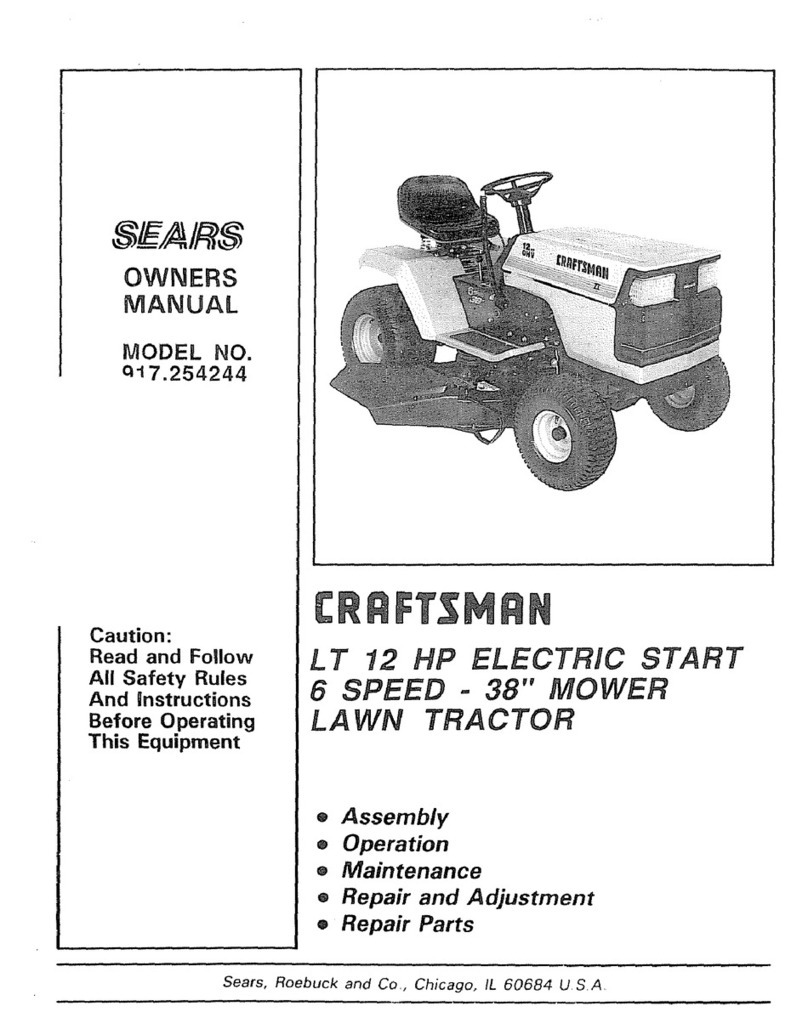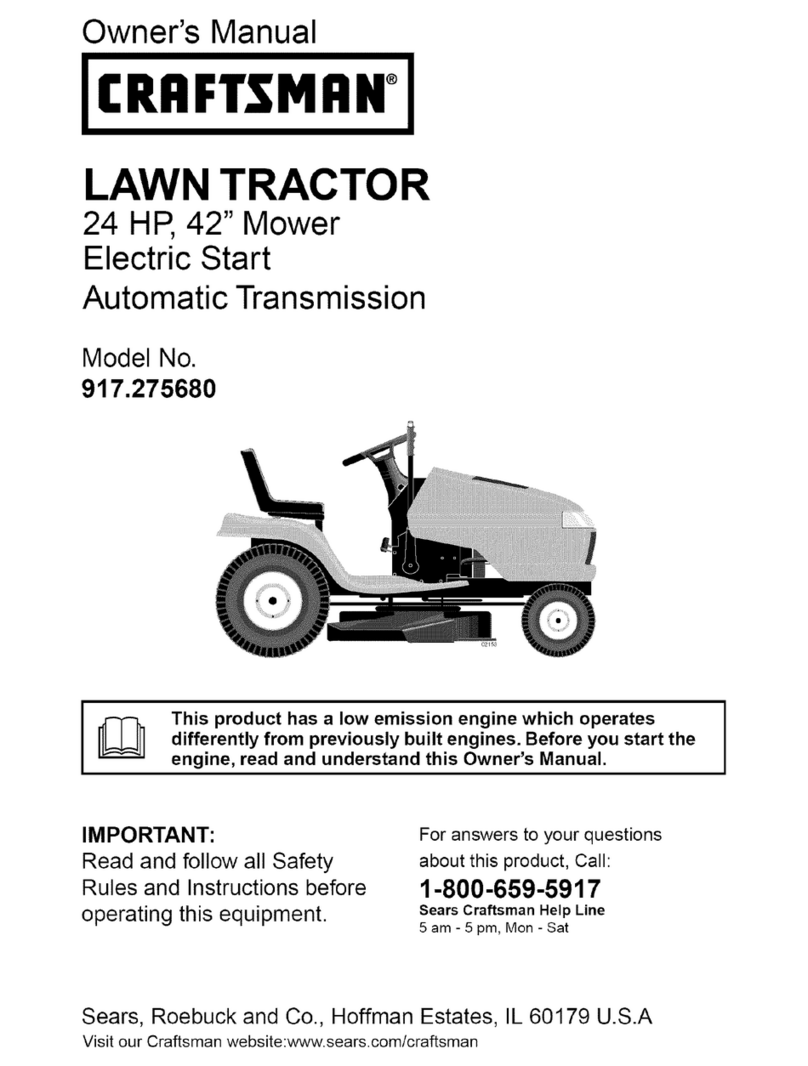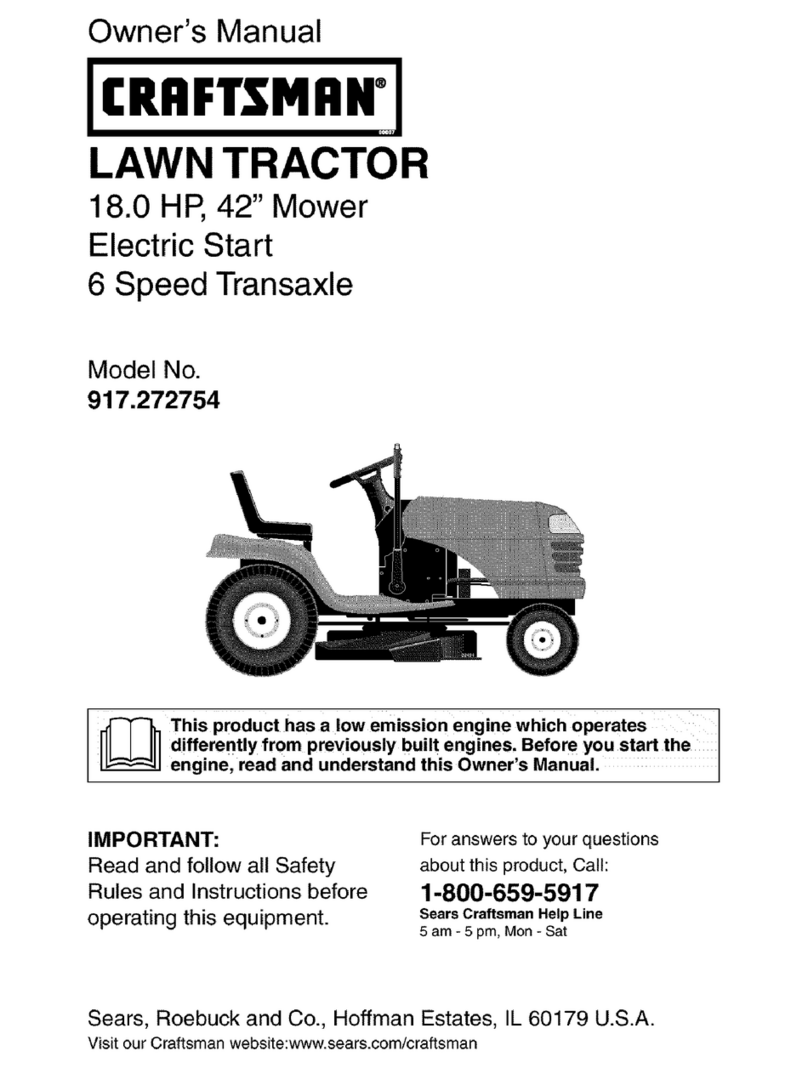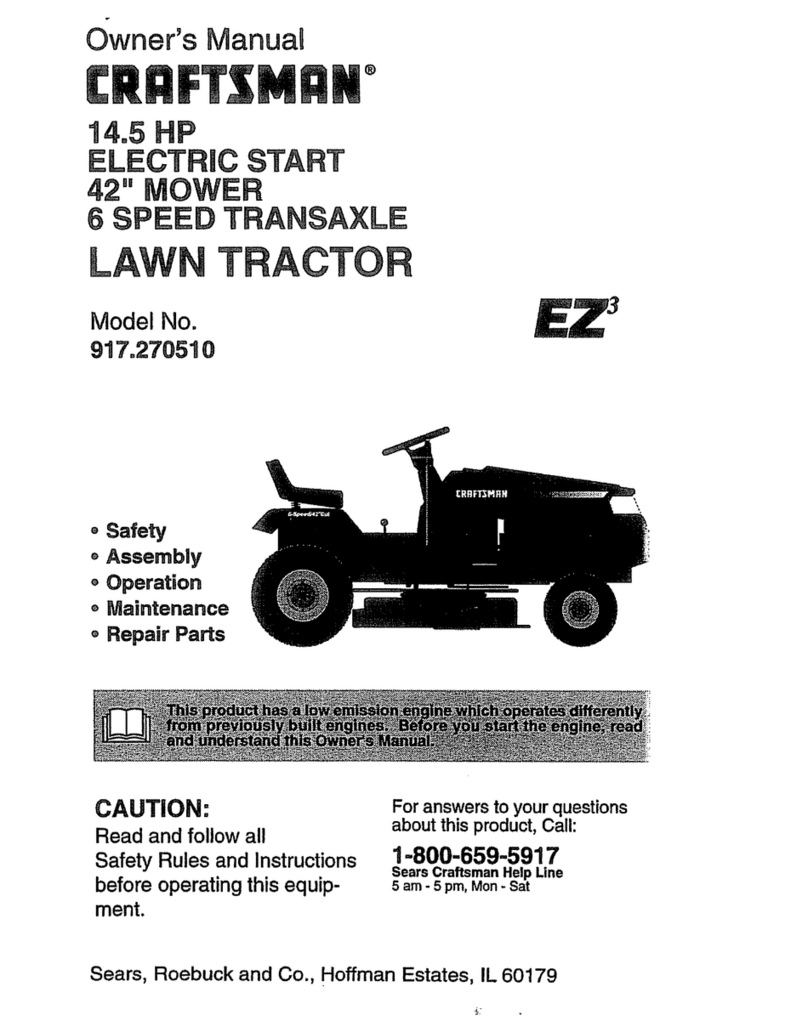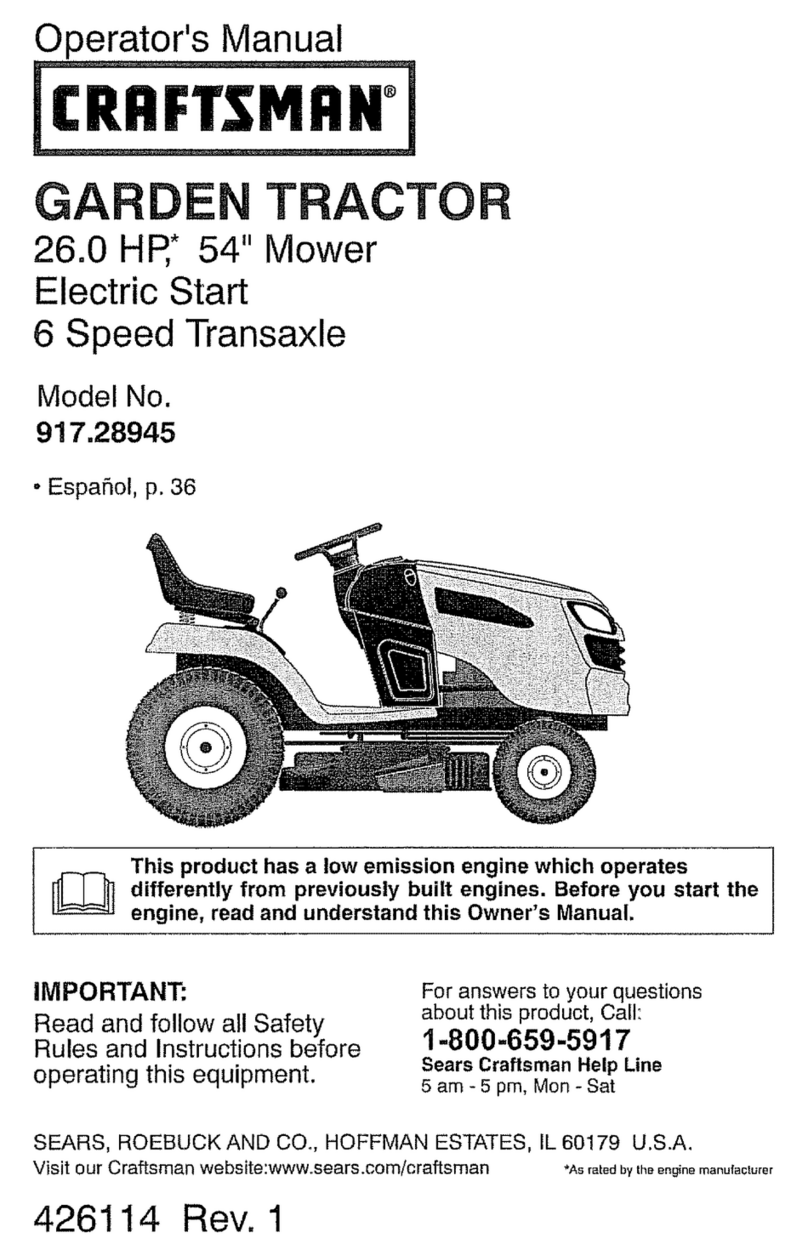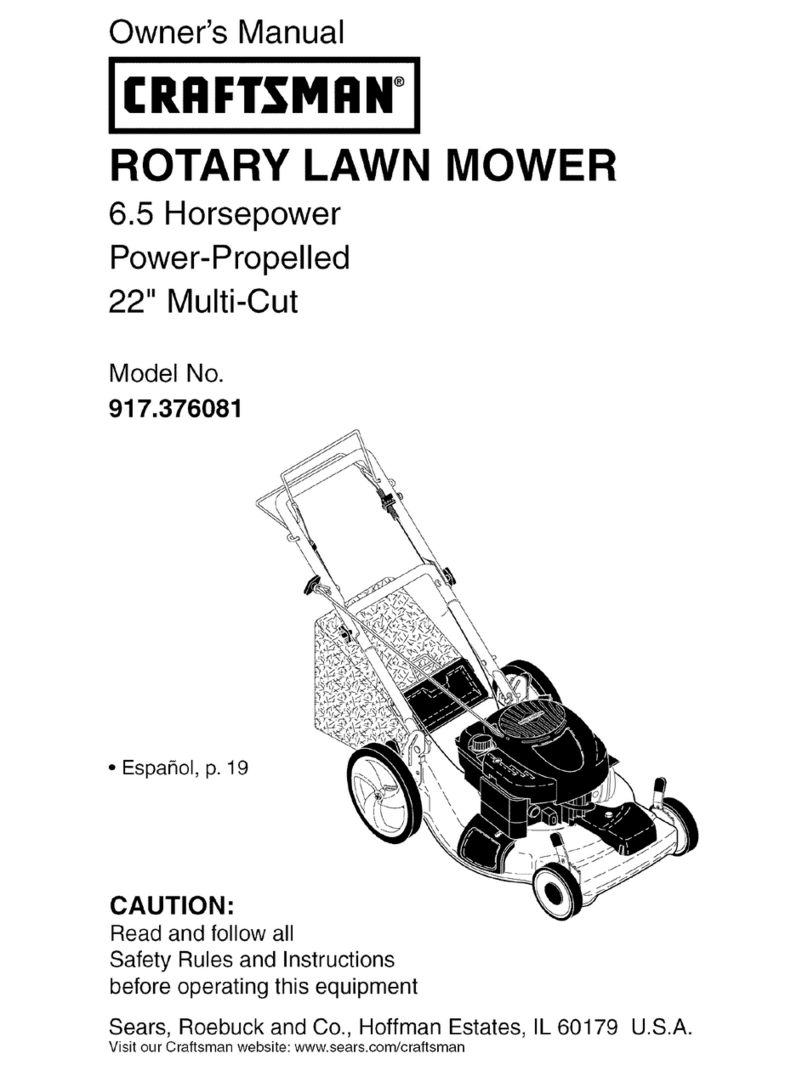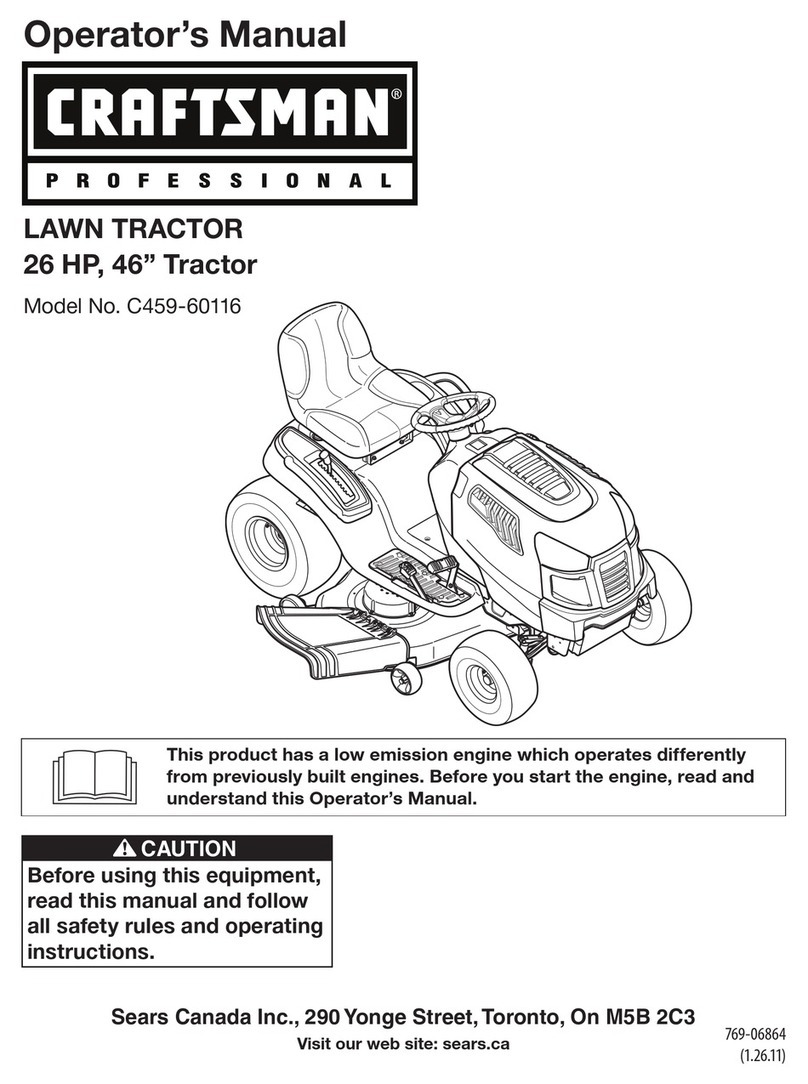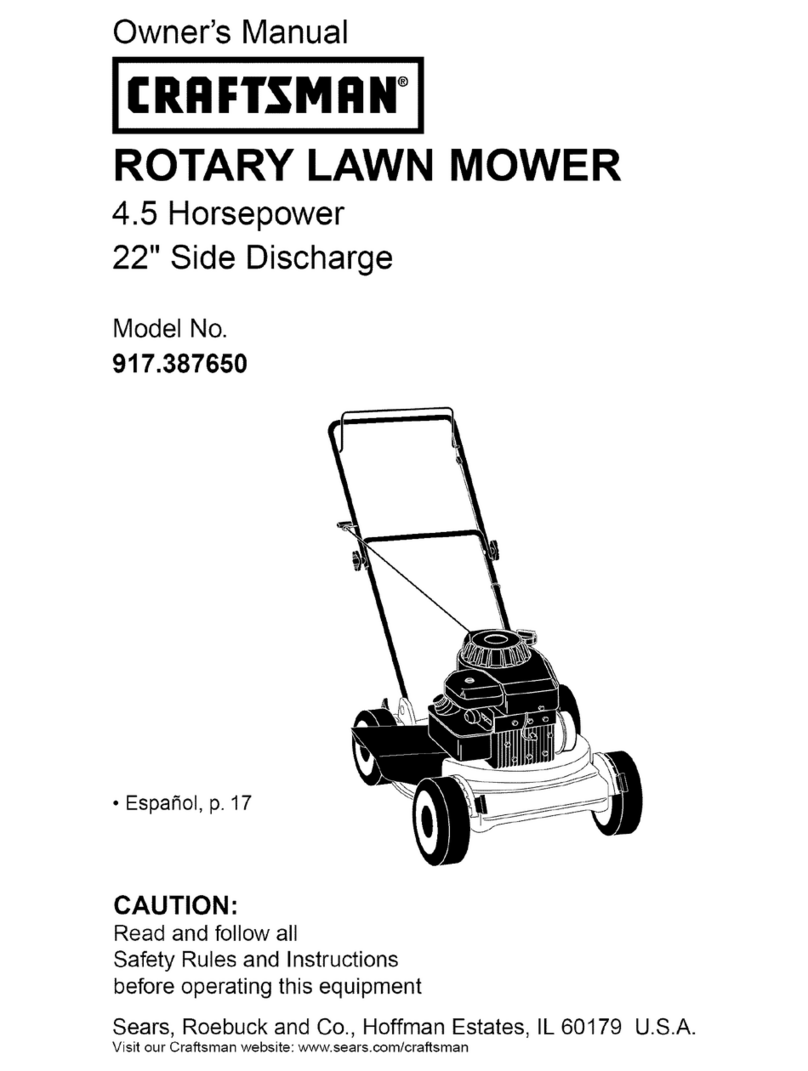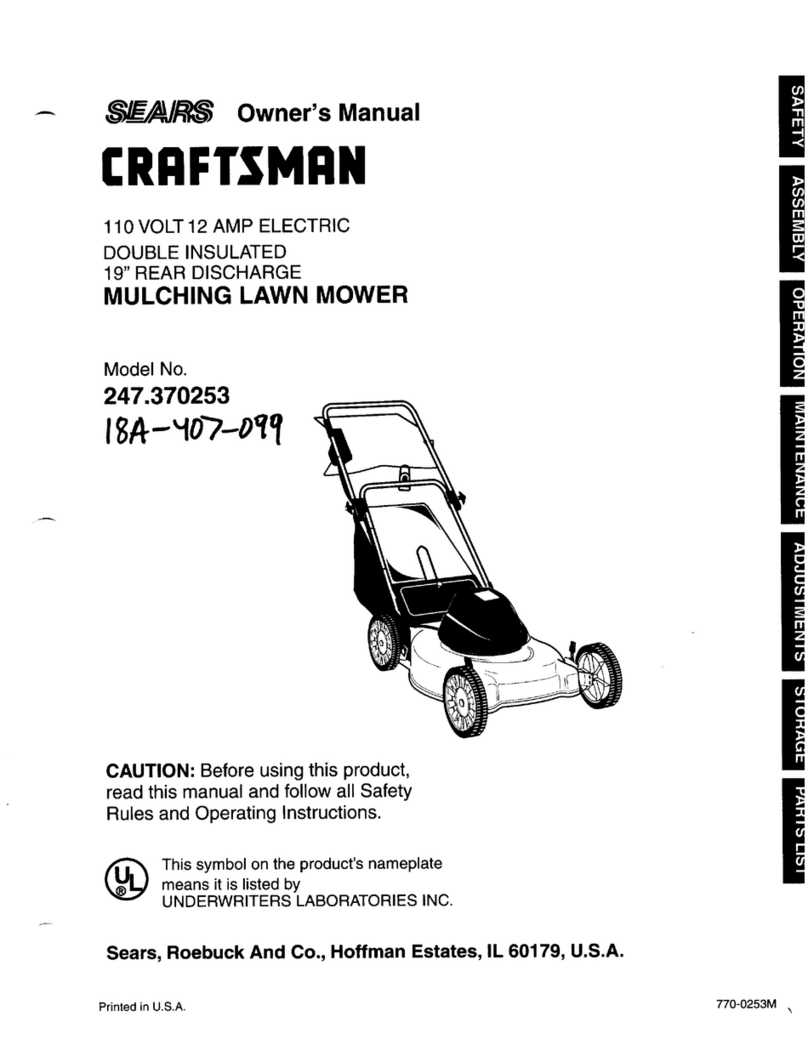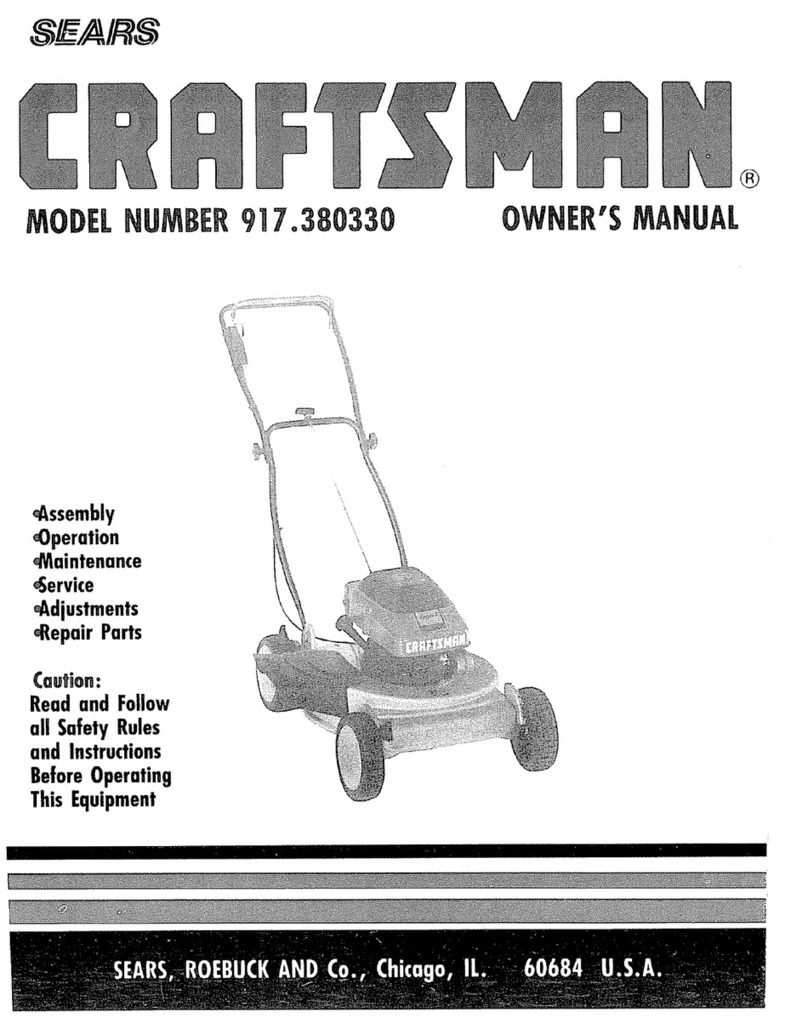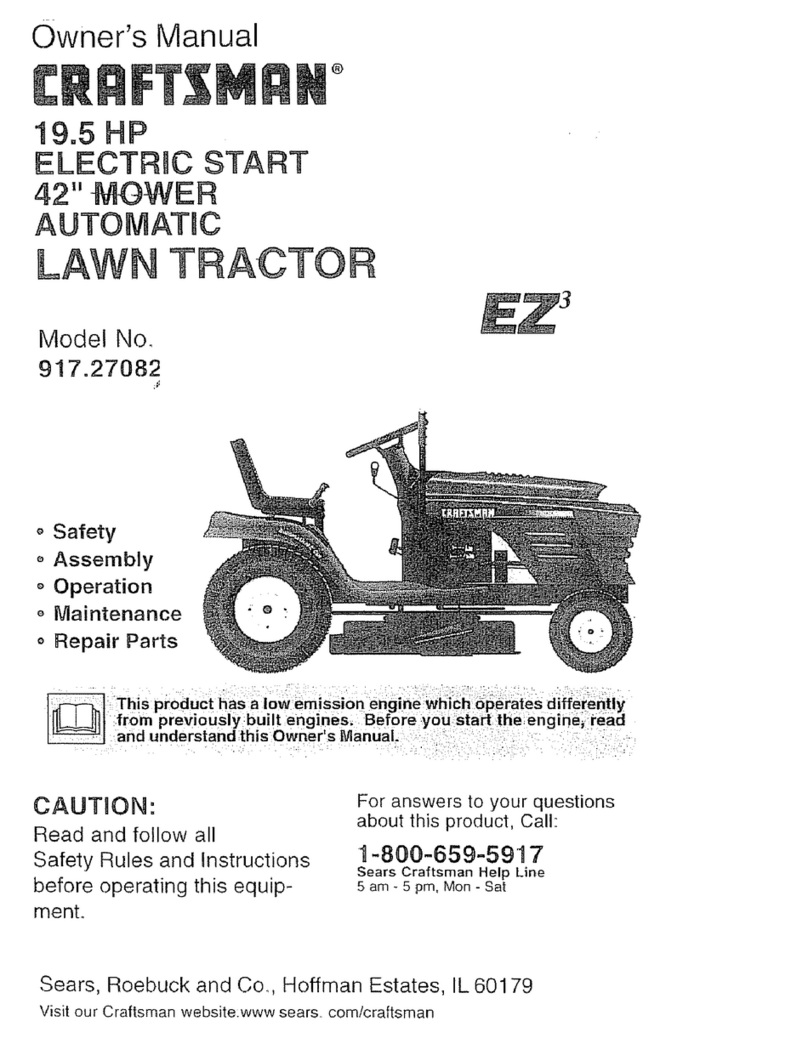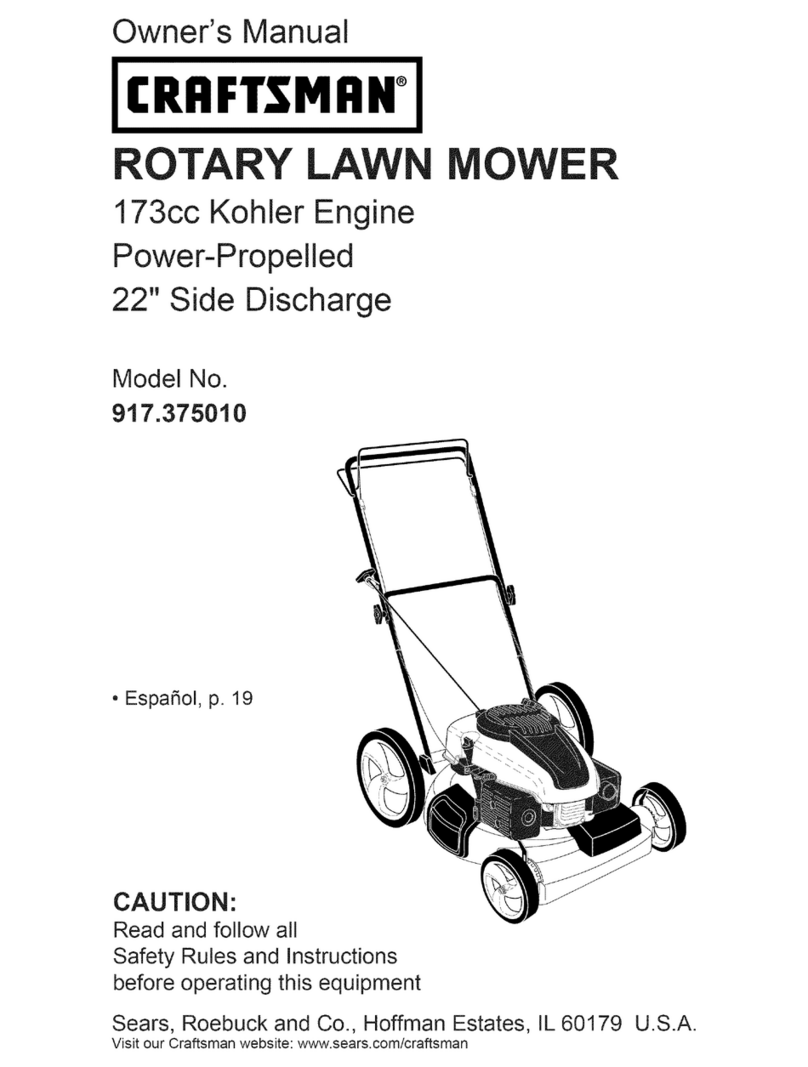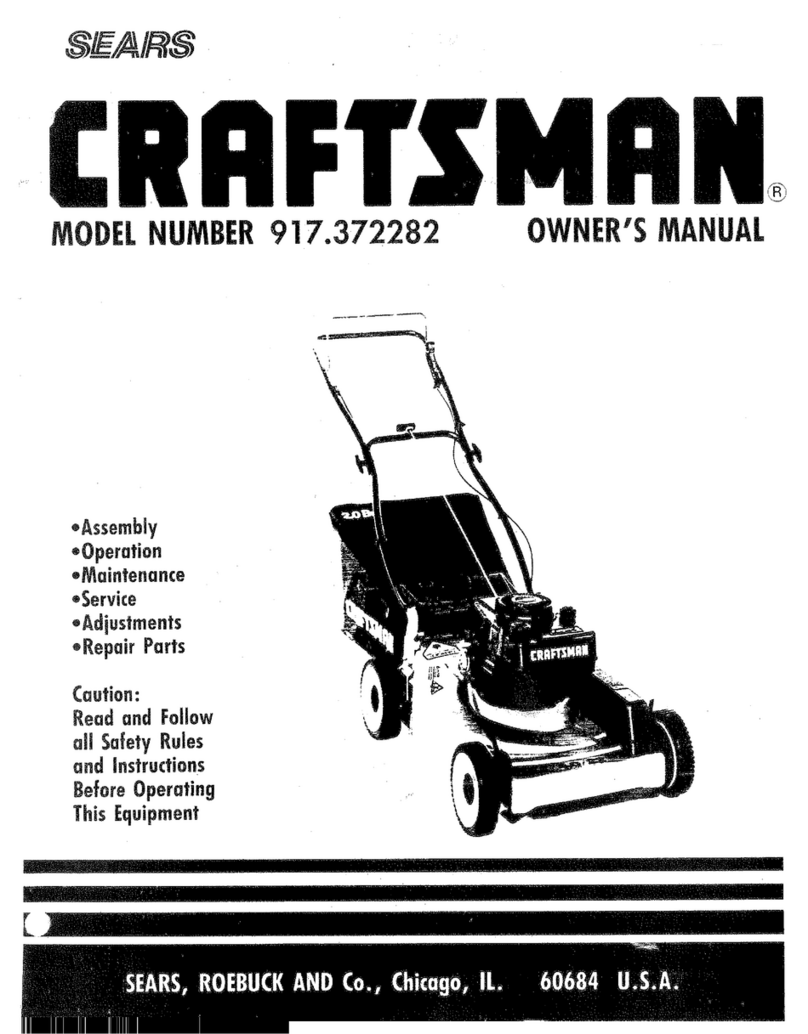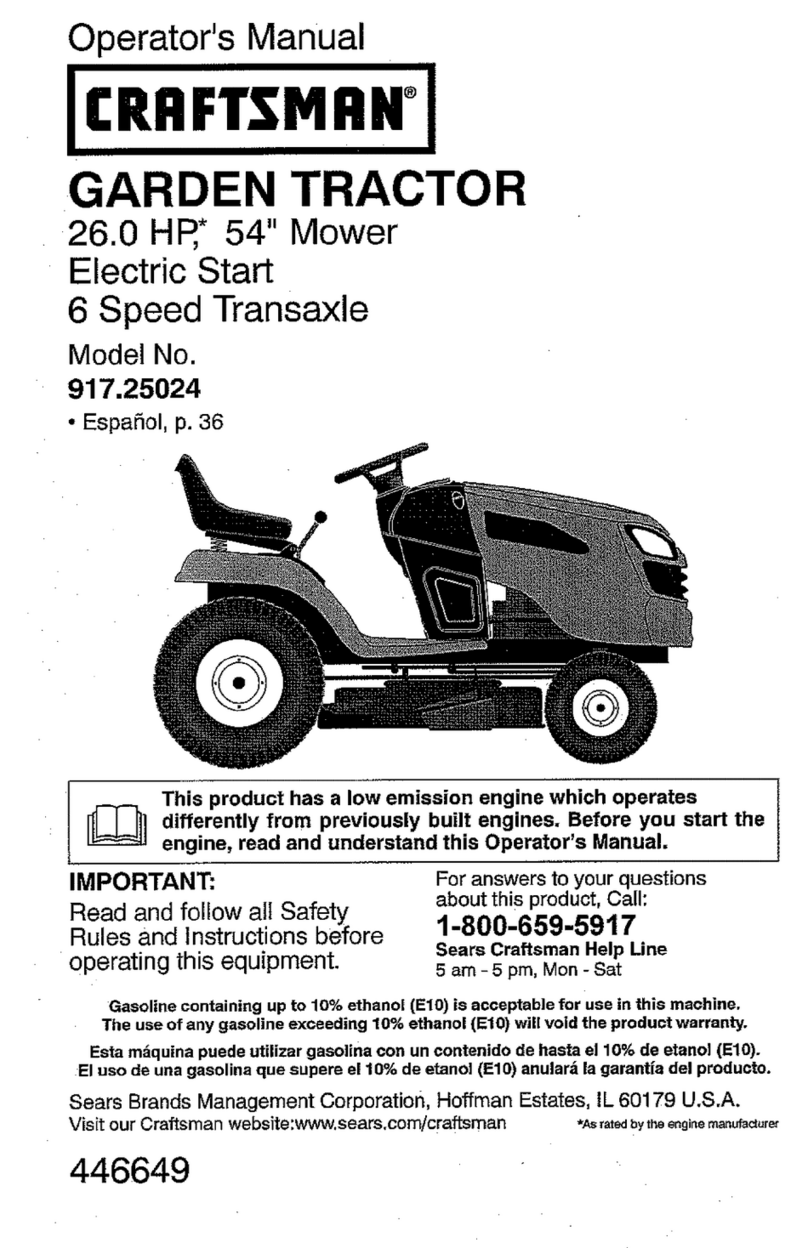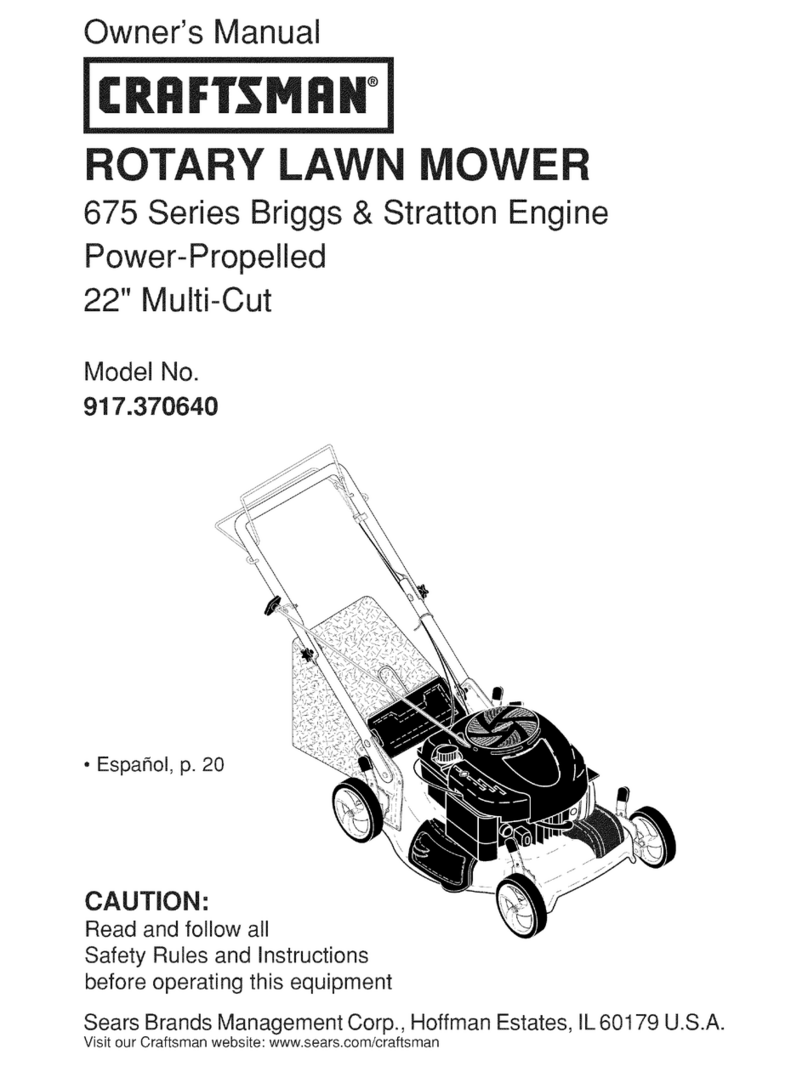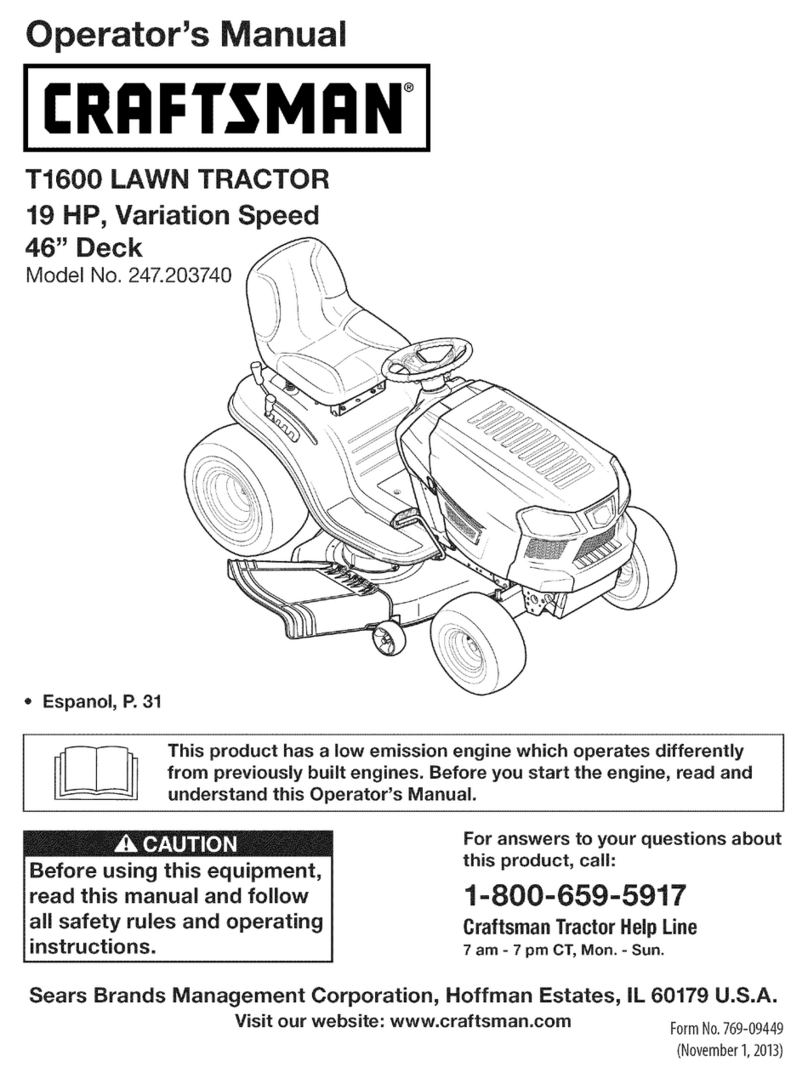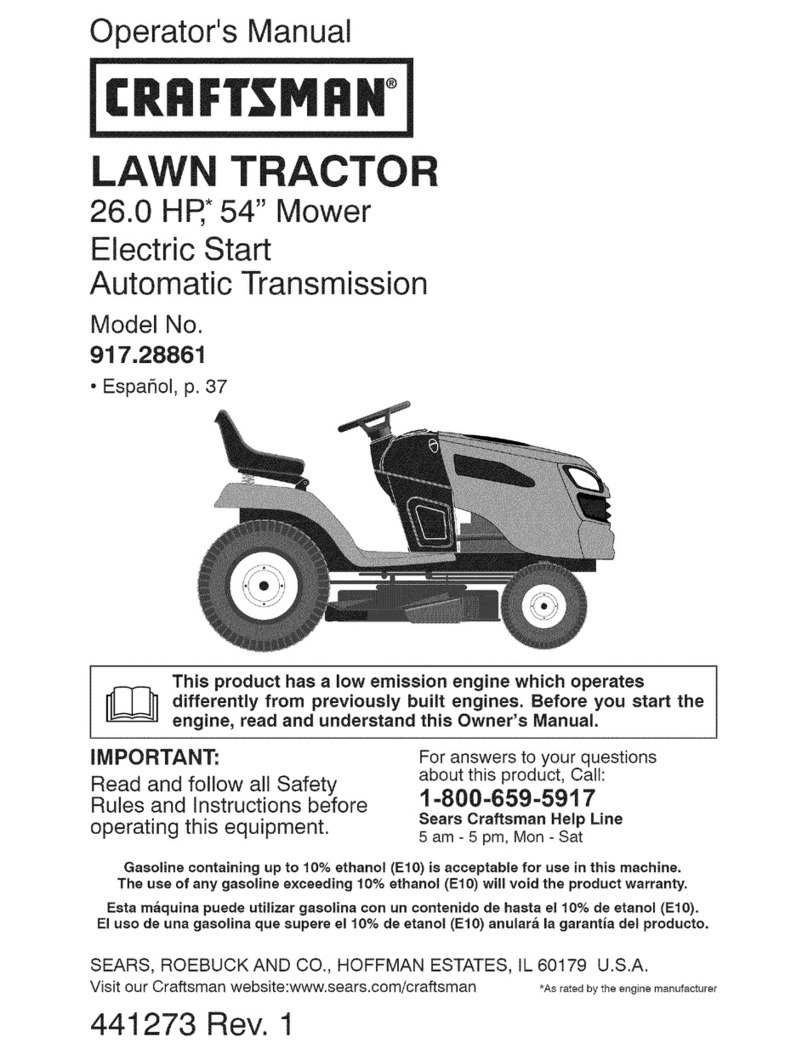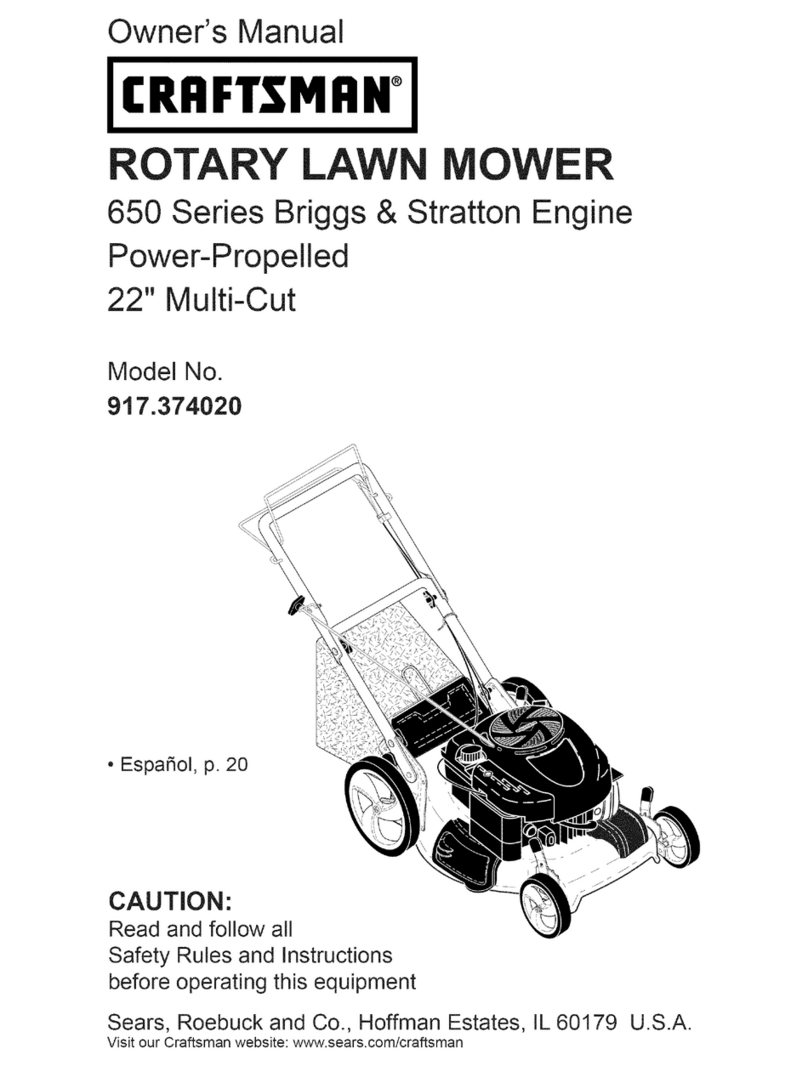IMPORTANT:Thiscuttingmachineiscapableofamputatinghandsand feet and
throwing,objects. Failure to observe the followingsafety instructions could result in
sedous injury or death.
I. GENERAL OPERATION
•Read, understand,arid follow all
instructions in the manual and on the
machine beforestarting.
• Only allow responsibleadults,who are
familiarwith the instructions,to operate
the machine.
•Clear the area ofobjectssuch as rocks,
toys,wire, etc., whichcould be picked
up and thrownby the blade.
• Be sure the area isclear of other people
before mowing. Stop machine if anyone
enters the area.
• Never carry passengers.
•Do net mow in reverse unlessabsolutely
necessary. Alwaysleek down and
behind before and while backing.
• Be aware of the mower discharge
directionand do net pointit at anyone.
Do notoperate the mowerwithout either
the entire grosscatcher or the guard in
place,
•Slowdown before tuming.
•Never leave arunning machine
unattended. Always turnoff blades,set
parking brake, stop engine, and remove
keys before dismounting.
•Turn off blades when net mowing.
•Stop engine before removinggrass
catcher or uncloggingchute.
•Mow only in daylightor good artificial
light.
•Do net operate the machine while under
the influenceof alcoholor drugs.
•Watch for trafficwhen operatingnear or
crossing roadways.
•Use extra care when loading or unload-
ingthe machine intoa bailer ortruck.
•Data indicatesthat operators,age 60
years and above, are involvedin a large
percentage of riding mower-related
injuries. These operators should
evaluate their abilityto operate the riding
mower safely enough to protecttbem-
selves and othersfrom seriousinjury.
•Keep machinefl'eeof grass, leavesor
other debris build-upwhichcan touch
bet exhaust/engine parts and bum. Do
net allow the mower deck toplow leaves
or other debris which can cause build-
up to occur. Clean any oilor fuel
spillagebefore operating or storingthe
machine. Allow machine to cool before
storage.
I1.SLOPE OPERATION
Slopes are a majorfactor related toloss--of-
control arid tipoveraccidents,whichcan re-
suit in severe injury or death. All slopes
requireextra caution, ffyou cannotback up
the slope or if you feel uneasy on it, do not
mow it.
DO:
•Mow upand down slopes, net across.
•Remove obstaclessuch as rocks,tree
limbs,etc.
Watch for holes,ruts, or bumps. Uneven
terrain could overtum the machine. Ta//
grass can hide obstacles.
Use slew speed. Choose a low gear so
that youwill nothave to stopor shift
while on the slope.
Follow the manufacturer's recommenda-
tions for wheel weights or counter-
weights to improvestability.
Use extra care with grass catchersor
other attachments. These can change
the stabilityof the machine.
Keep all movement on the slopes slow
and gradual Do notmake sudden
changes in speed or direction.
Avoid startingor stoppingon a dope. ff
tireslose traction, disengagethe blades
and proceed slowly straight downthe
slope.
DO NOT:
•Do not rum on slopes unless necessary,
and then, turnslowlyand gradually
downhill, if possible.
•Do notmow near drop-offs,ditches,or
embankments. The mower could
suddenlyturn over if awheel is over the
edge ofa cliffor ditch, or ifan edge
caves in.
•Do notmow on wet grass. Reduced
traction could cause sliding.
•Do not try to stabilizethe machine by
patting your foot onthe ground.
•Do notuse grass catcheron steep
slopes.
3
